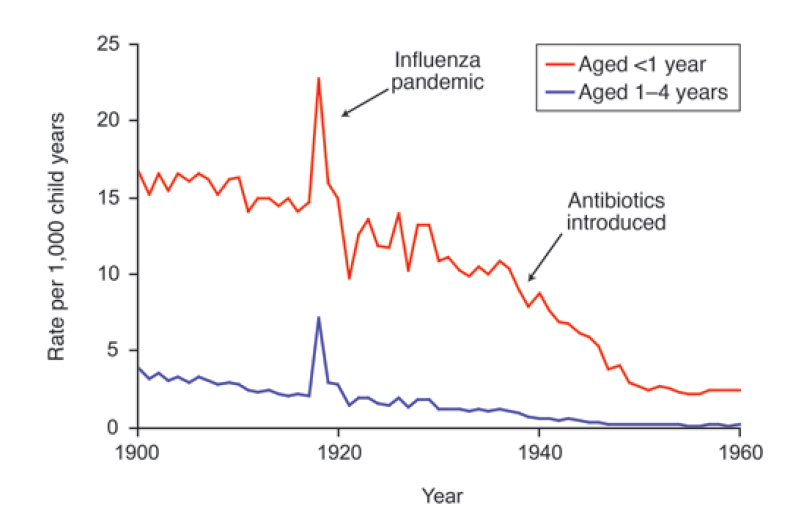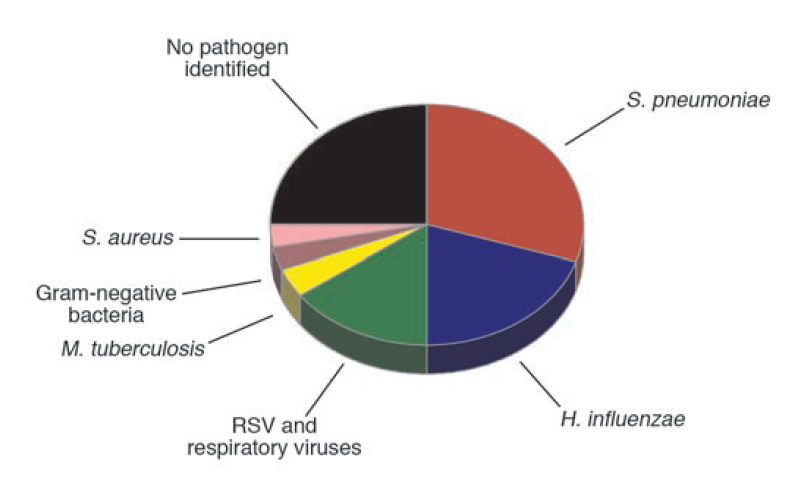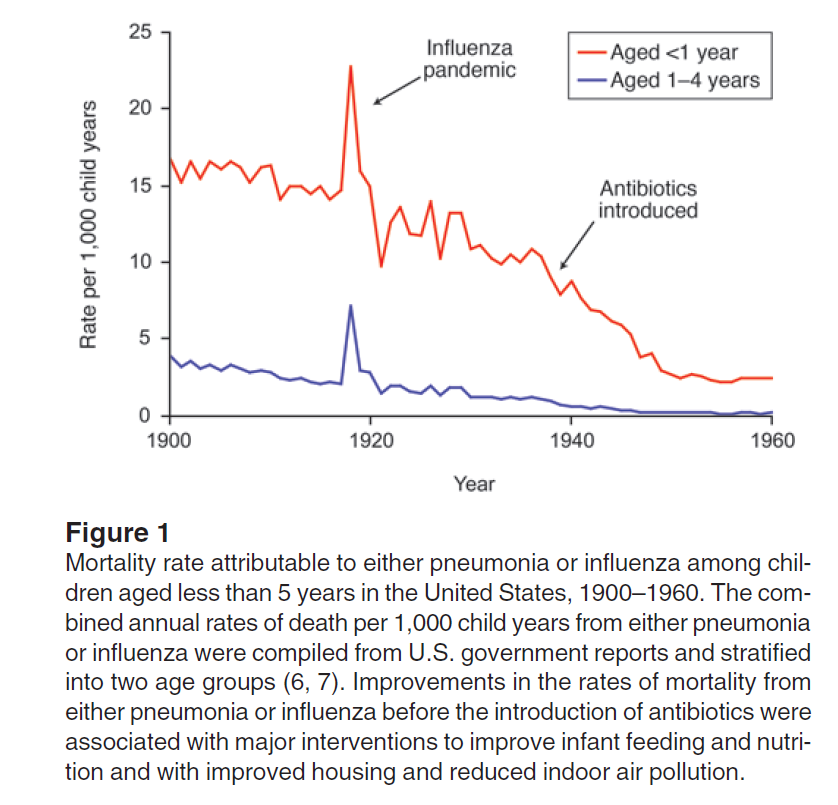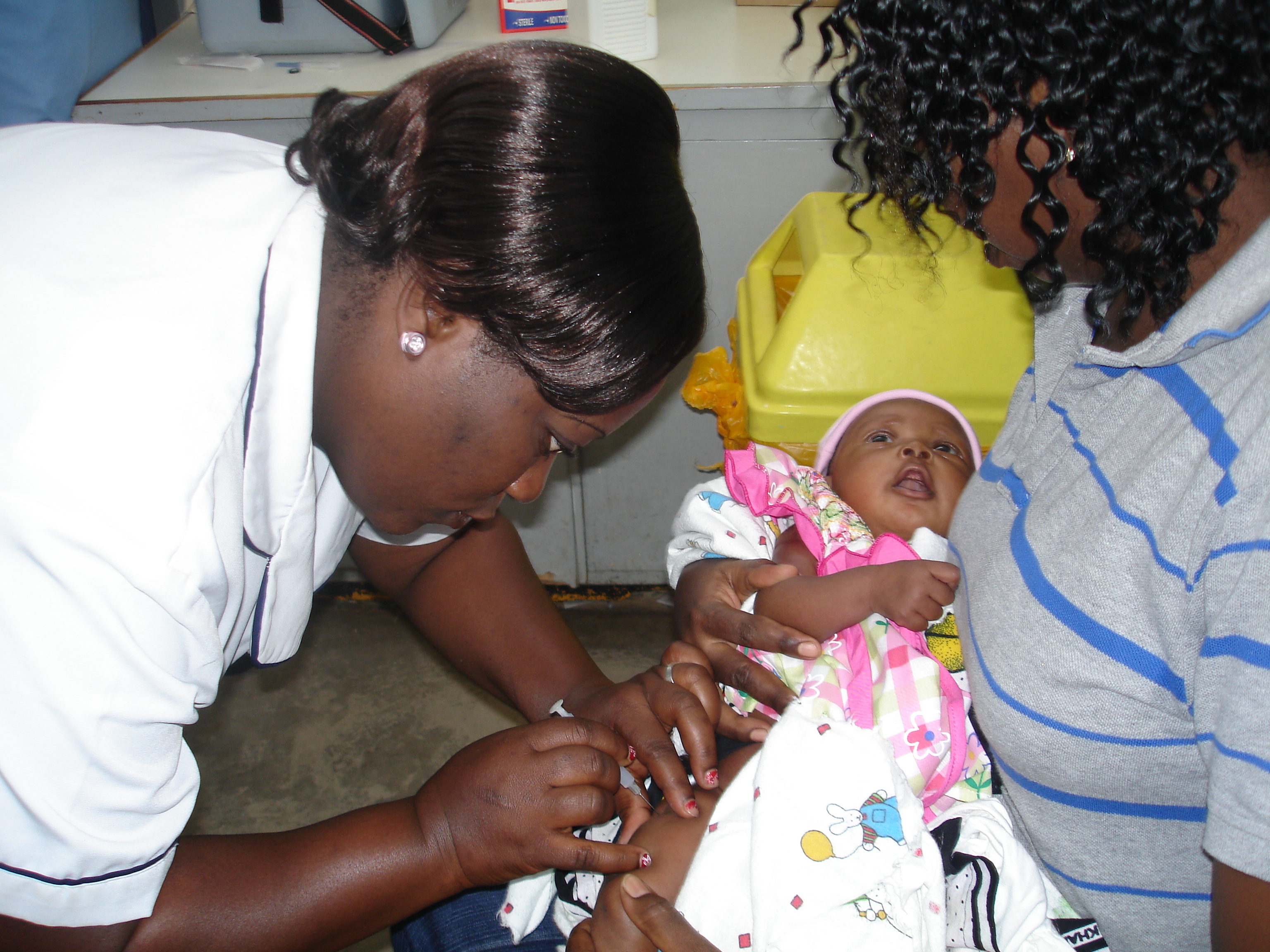
So what causes pneumonia?
So we are well aware that pneumonia is caused mainly by bacteria, viruses and fungi that infect the lungs. However, scientists do not know what causes a quarter of all pneumonia episodes.
To illustrate this point, I use this pie chart from a 2008 paper published by Prof Scott and colleagues in The Journal of Clinical Investigation.
This pie chart shows that in every 4 cases of pneumonia, for 1 there is no known bug (pathogen) that was isolated during the course of disease. That for this one out of 4 cases, the laboratory results showed that the lungs were clear of any infectious agent.
This is pneumonia’s ‘dark space’ which will be ‘colored’ with time as technologies improve – perhaps a new technique for isolating some bug – it may prove to be something simpler than thought or perhaps something very complex. Researchers are hard at work to ‘color’ up that space.
One such study being conducted partly at KEMRI – WTRP in Kilifi is known as PERCH, which stands for Pneumonia Etiology Research for Child Health. According to lead researcher Dr Laura Hammitt, the use of PCR techniques will allow scientists to look for a whole variety of viruses and bacteria which was not possible 20 years ago.
Some researchers speculate that part of the unknown could be labelled ‘pollution’ – this research is still underway. It would not be surprising considering there are areas where the air is badly polluted and children’s lungs are getting frequently inflamed and this in itself could cause lung disease.
Factors associated with poverty have also been known to increase a child’s chance of getting pneumonia.
I like this graph presented in the same paper by Prof Scott and colleagues that shows that long before antibiotics became available, pneumonia cases were dropping drastically in the USA.
I quote the paper
‘In 1900 in the USA, it is estimated that pneumonia killed 47 of every 1,000 children before the age of 5 years. Improvements in nutrition and living standards in the USA in the first 40 years of the 20th century led to a substantial reduction in pneumonia mortality well before antibiotics became available as an effective treatment’.
This translates to; reducing crowding by getting rid of slums, ensuring that every child lives in a well ventilated house, providing clean drinking water and good sewage, ensuring that every adult is able to earn enough to feed their children well, making sure that factories maintain certain standards to ensure that the air is not polluted AND pneumonia will drop significantly.
The fight against infectious diseases like pneumonia and malaria will be won substantially by improvement in the welfare of the ‘ordinary’ people. Once people are well educated and living like human beings ought to – a lot of these disease will be reduced significantly – they are unlikely to be totally obliterated but they can be reduced to a point where they are no longer the cause of thousands of deaths annually.





